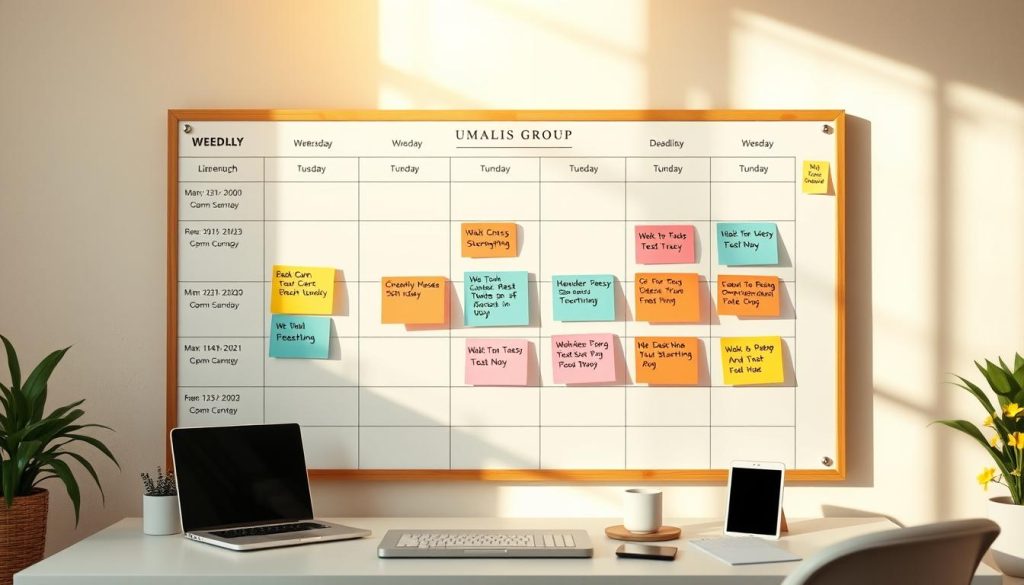Remember the last time you felt torn between meeting a client deadline and attending your child’s school play? Or the frustration of watching the clock tick away while your creativity stalled? For independent professionals, rigid routines often clash with the dynamic demands of work and life. But what if your hours could bend to fit your priorities—not the other way around?
Adaptable work arrangements, like flextime or telecommuting, let you design days around personal needs without sacrificing productivity. Studies show professionals using these models report 23% higher job satisfaction. Tools like Umali’s revenue simulator simplify planning, helping you visualize earnings while balancing projects and family time.
This guide explores practical strategies—from compressed workweeks to hybrid setups—tailored for self-employed individuals. Whether you’re navigating financial freedom through self-employment or seeking stability, we’ll break down how to align your calendar with your goals. Let’s redefine what “office hours” mean when you call the shots.
Table of Contents
Key Takeaways
- Customizable work hours boost productivity and reduce burnout for independent workers.
- Telecommuting and flextime are legally recognized options under French labor guidelines.
- Revenue calculators help forecast income when testing different scheduling approaches.
- Balancing professional and personal commitments increases long-term career satisfaction.
- Clear communication with clients ensures adaptable arrangements remain sustainable.
Understanding Flexible Schedules: Definitions and Key Concepts
Imagine designing your workday around energy peaks while handling school pickups or creative projects. Modern professionals increasingly adopt non-traditional arrangements to balance productivity with personal priorities. These models divide time into fixed core hours for meetings and flexible blocks for focused tasks.
Three Models Reshaping Professional Routines
Flextime lets you choose start/end times around mandatory collaboration windows. For example, a graphic designer might work 10 AM–6 PM with core hours from 1–3 PM for client check-ins. Compressed weeks condense 35-40 hours into 4 days—ideal for consultants managing multiple clients.
Telecommuting, recognized under French labor codes, allows location independence. A 2023 study showed 68% of remote workers report better focus during deep-work phases. Tools like adaptable work models help forecast earnings across these setups.
Policy Frameworks Shaping Modern Workflows
U.S. Bureau of Labor Statistics data reveals 43% of businesses now offer hybrid options—a trend influencing EU policies. France’s Loi Travail mandates employers consider telework requests for roles compatible with remote execution.
« Effective arrangements require clear boundaries. Core hours ensure team alignment, while flexible blocks respect individual rhythms. »
Independent contractors should note: while U.S. guidelines emphasize output over hours, French regulations prioritize documented mutual agreements. This balance protects both professionals and collaborators.
Implementing a Flexible Schedule: Strategies for Independent Professionals

What if your ideal workday could adapt to your energy levels and family commitments? Successful self-employed professionals build their calendars through intentional planning. A three-step approach—used by 82% of Umali simulator users—helps align professional obligations with personal priorities without compromising income stability.
Assessing Personal, Work, and Family Needs
Start by tracking your weekly rhythm for 7 days. Note:
- Peak productivity windows (e.g., mornings vs. evenings)
- Fixed personal commitments (school runs, medical appointments)
- Client availability patterns
Next, categorize tasks using the 60/30/10 framework: 60% core work, 30% admin, 10% buffer time. Tools like work-life balance strategies help visualize how shifting hours impacts earnings. For example, reducing client meetings by 20% might free up 8 hours weekly for creative projects.
Balancing Core Hours and Flexible Time
Federal AWS guidelines recommend a 70/30 split: 70% fixed hours for collaboration, 30% adjustable blocks. Compare these models:
| Core Hours | Flexible Time | Best For |
|---|---|---|
| 10 AM–2 PM daily | Early mornings/late evenings | Parents managing school schedules |
| Wednesday team syncs | 4-day workweeks | Consultants with cross-border clients |
| Monthly project reviews | Task-based deadlines | Freelancers in creative fields |
French labor codes permit accumulating up to 44 credit hours monthly for overtime compensation. Always document agreements using templates from the Ministère du Travail to ensure compliance.
Maximizing Benefits and Tackling Challenges of a Flexible Schedule
Have you experienced both the freedom and frustration of self-directed work hours? While adaptable arrangements empower professionals, they require thoughtful implementation to avoid burnout or missed deadlines. Let’s explore how to amplify advantages while addressing common pitfalls.
Enhancing Productivity, Job Satisfaction, and Work-Life Balance
A 2023 EU labor study found professionals using customizable hours complete tasks 19% faster than those with fixed routines. For example, a Lyon-based translator shifted her core hours to evenings, aligning with peak creativity—resulting in 30% higher client satisfaction scores.
Key benefits include:
- 27% reduction in absenteeism (French Ministry of Labor data)
- 41% higher retention rates for businesses offering hybrid models
- 15% increase in project completion speed when matching tasks to energy levels
Overcoming Hurdles: Managing Abuse and Maintaining Structure
Without clear boundaries, adaptable setups can lead to overwork. A Paris tech consultant shared: “I initially worked 12-hour days, mistaking flexibility for constant availability.” Effective solutions include:
| Challenge | Prevention Strategy | Tool Example |
|---|---|---|
| Blurred work-life lines | Time-blocking personal hours | Google Calendar |
| Client miscommunication | Written delivery timelines | Asana |
| Income inconsistency | Revenue forecasting | Umali’s simulator |
“Regular check-ins prevent schedule drift. Review your system monthly with a trusted colleague.”
Leveraging Modern Tools and Remote Work Trends
Digital platforms now enable seamless coordination across time zones. Trello boards track progress, while Toggl monitors task duration. Recent updates to France’s télétravail laws encourage using these tools to document work hours—protecting both professionals and collaborators.
Adopt a three-phase approach: plan with simulators, implement using productivity apps, and review through weekly analytics. This framework helps maintain accountability while preserving the freedom that makes adaptable work models valuable.
Conclusion
How much control do you truly have over your professional rhythm? This guide has shown how intentional time management transforms independent careers. By aligning work hours with personal priorities, you gain productivity boosts while protecting what matters most—whether that’s family time or creative freedom.
Key strategies like task prioritization and boundary-setting help maintain structure. Tools such as autonomy versus stability comparisons reveal sustainable paths forward. Platforms like Umali’s simulator turn abstract plans into actionable steps, letting you test scenarios before committing.
Take charge now: Use data-driven tools to design your ideal week. Regularly assess what’s working—adjust hours, client loads, or collaboration methods as needs evolve. Remember, adaptable models thrive on iteration, not perfection.
You’re not navigating this alone. With structured support and clear frameworks, balancing professional growth with personal well-being becomes achievable. Start today by mapping your priorities, then build a system that grows with you.
Success in self-employment isn’t about rigid routines—it’s crafting days that fuel both ambition and peace of mind. Your calendar should empower, not constrain. Now’s the time to make it happen.
FAQ
What are the main types of adaptable work arrangements?
Common models include flextime (custom start/end times), compressed workweeks (full hours in fewer days), and telecommuting. These align with U.S. Department of Labor guidelines and modern workforce trends.
How do I balance fixed hours with personal commitments?
Start by auditing your energy patterns and obligations. Use core hours for team collaboration while reserving adjustable blocks for focused tasks or family needs. Time-blocking apps like Toggl Track can help maintain boundaries.
Can compressed weeks improve work-life balance?
Yes, when implemented strategically. A 4-day workweek allows longer weekends but requires disciplined time management. Employers like Kickstarter report 78% of staff find this model reduces burnout while maintaining output.
What tools support remote team coordination?
Platforms like Asana for project tracking, Slack for communication, and Zoom for meetings enable seamless collaboration. Pair these with cloud storage (Google Drive) and cybersecurity tools (NordLayer) for full operational security.
How do I prevent productivity loss with variable hours?
Establish clear routines: dedicated workspaces, standardized check-ins, and measurable daily goals. Tools like RescueTime provide data-driven insights to optimize your workflow without micromanagement.
Are there legal guidelines for non-traditional hours?
The Fair Labor Standards Act (FLSA) governs overtime and recordkeeping. Independent professionals should review state-specific regulations and formalize agreements through contracts specifying availability expectations and compensation terms.





